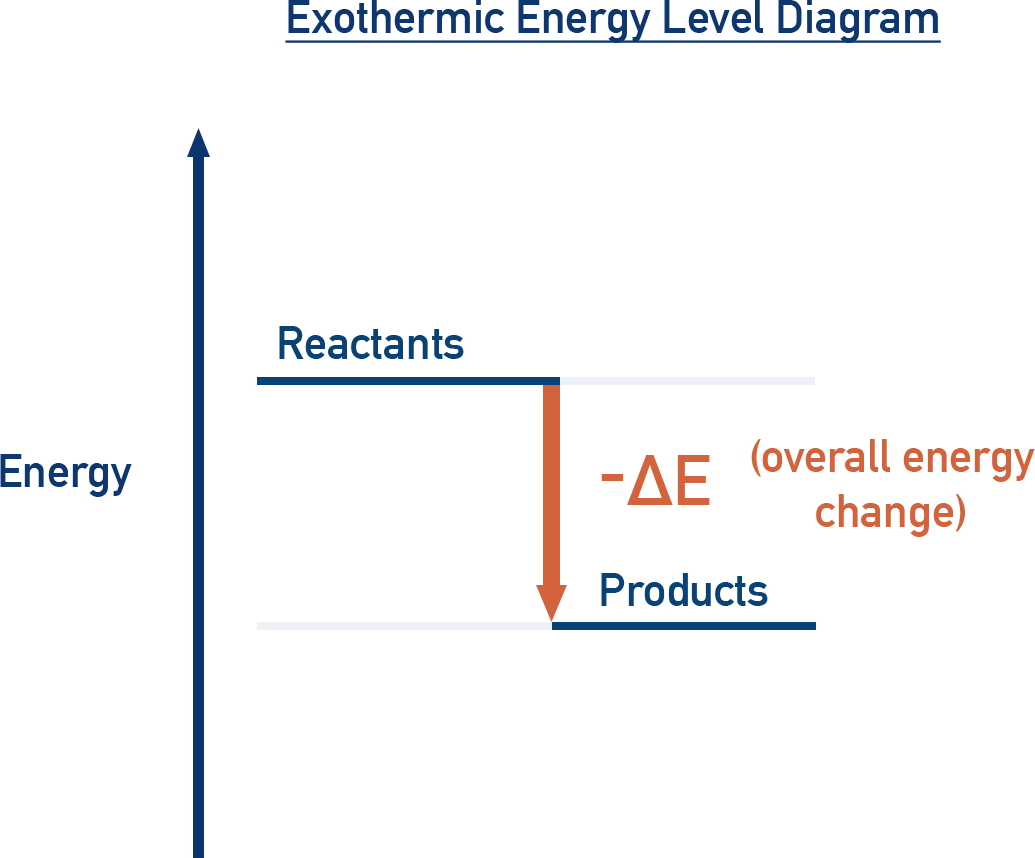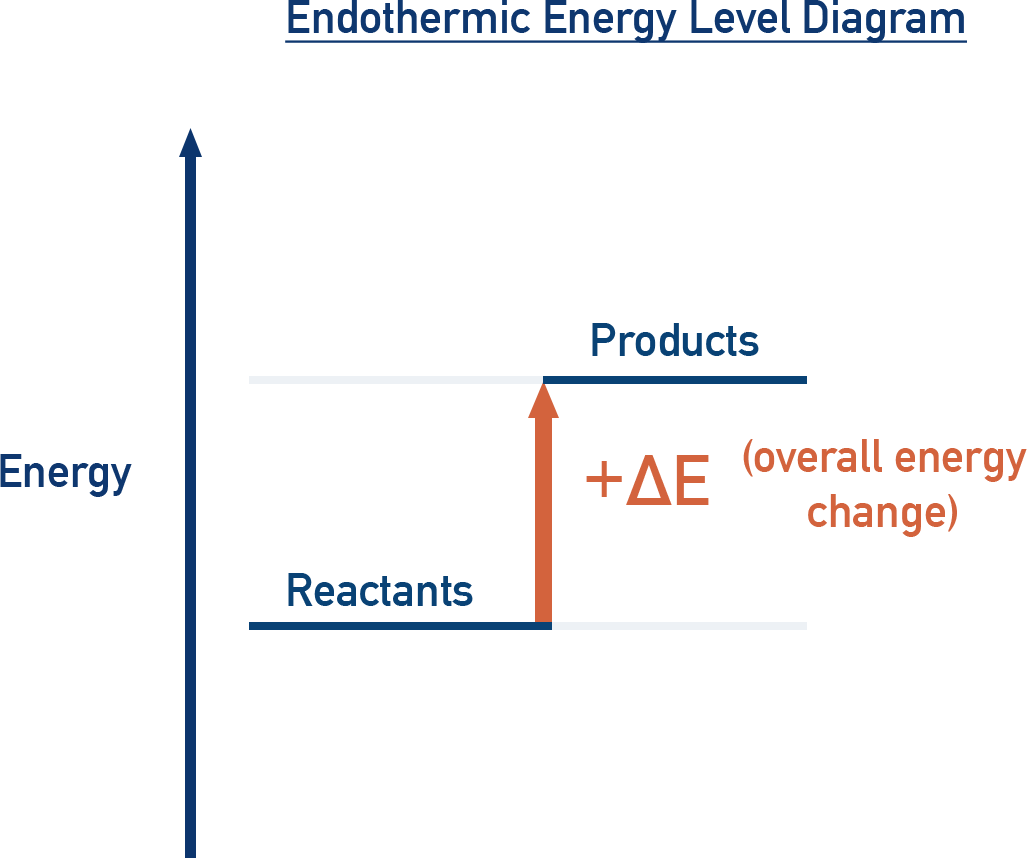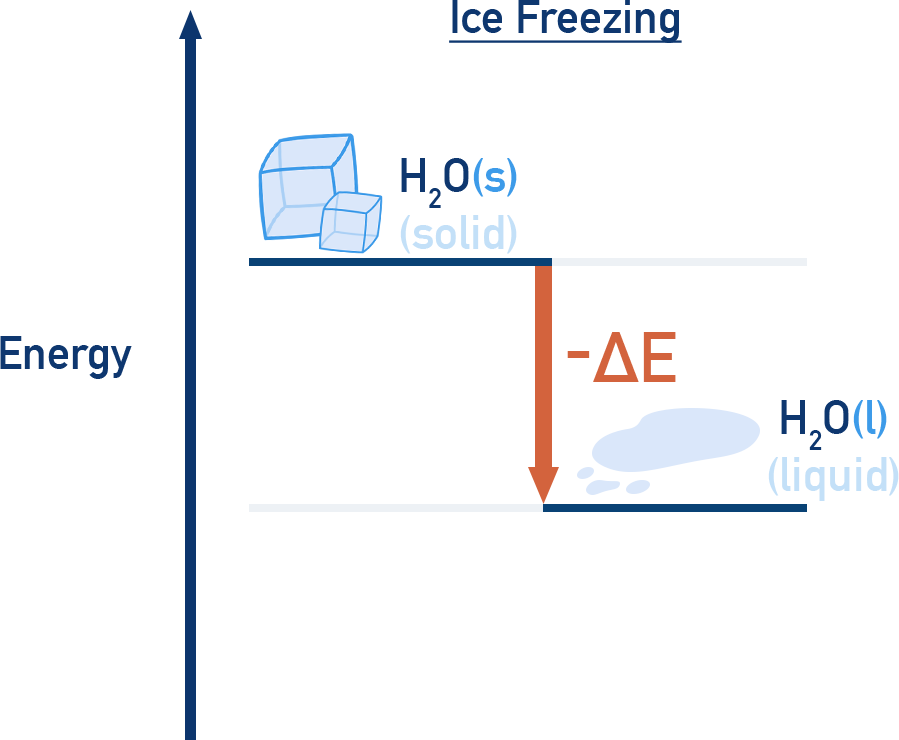Energy Diagrams
Quick Notes
- Energy diagrams illustrate how potential energy changes overall for a chemical or physical process.
- They show whether a process is endothermic or exothermic by comparing reactant and product energy levels.
- Key features:
- Reactants on the left, products on the right.
- ΔE = difference between product and reactant energy levels.
- -ΔE = exothermic
- +ΔE = endothermic
Full Notes
What Is an Energy Diagram?
An energy diagram is a graphical way of showing the overall energy change that occurs during a chemical reaction or physical process. The y-axis represents potential energy.
Note: Energy level diagrams are simpler than reaction profile diagrams (see 5.6. Energy level diagrams show only the relative energy of reactants and products, while reaction profile diagrams also show activation energy and the transition state(s).

Exothermic Energy Diagram

ΔE < 0
- Products have lower energy than reactants.
- Energy is released to the surroundings.
- Examples: combustion, neutralisation.
Endothermic Energy Diagram

ΔE > 0
- Products have higher energy than reactants.
- Energy is absorbed from the surroundings.
- Examples: photosynthesis, melting.
Physical Transformations
Energy diagrams also apply to phase changes and other physical transformations:
- Melting: endothermic (energy absorbed)
- Freezing: exothermic (energy released)


Matt’s Exam Tip

Be clear on the difference between an energy level diagram and a reaction profile diagram:
- An energy level diagram shows just the relative energy of reactants and products (ΔE only).
- A reaction profile diagram shows how energy changes during the reaction, including activation energy (Ea) and the transition state.

Summary
Energy diagrams are visual tools that represent whether a process is endothermic or exothermic. They show the energy difference (ΔE) between reactants and products and can also be extended to reaction profile diagrams that include activation energy. Understanding these diagrams allows us to connect energy changes with experimental observations, reaction spontaneity, and kinetics.
